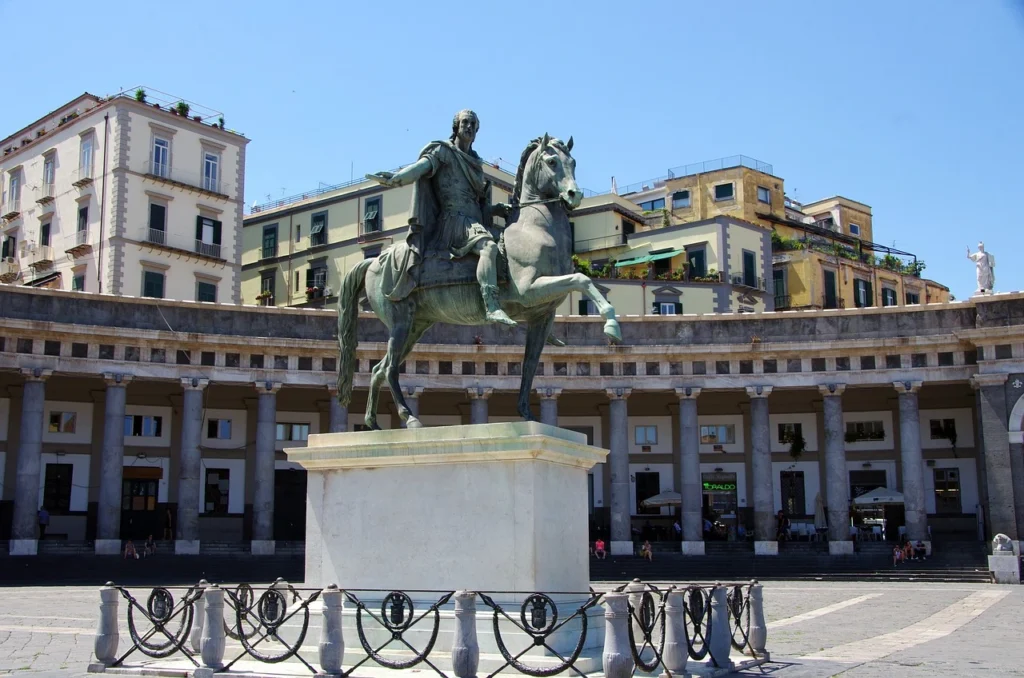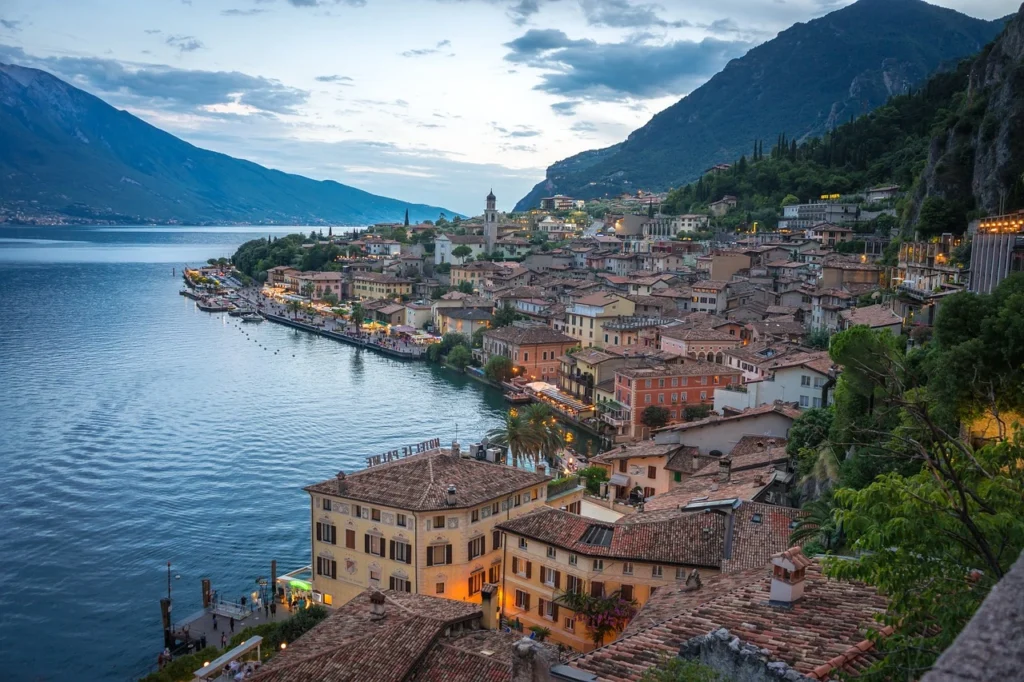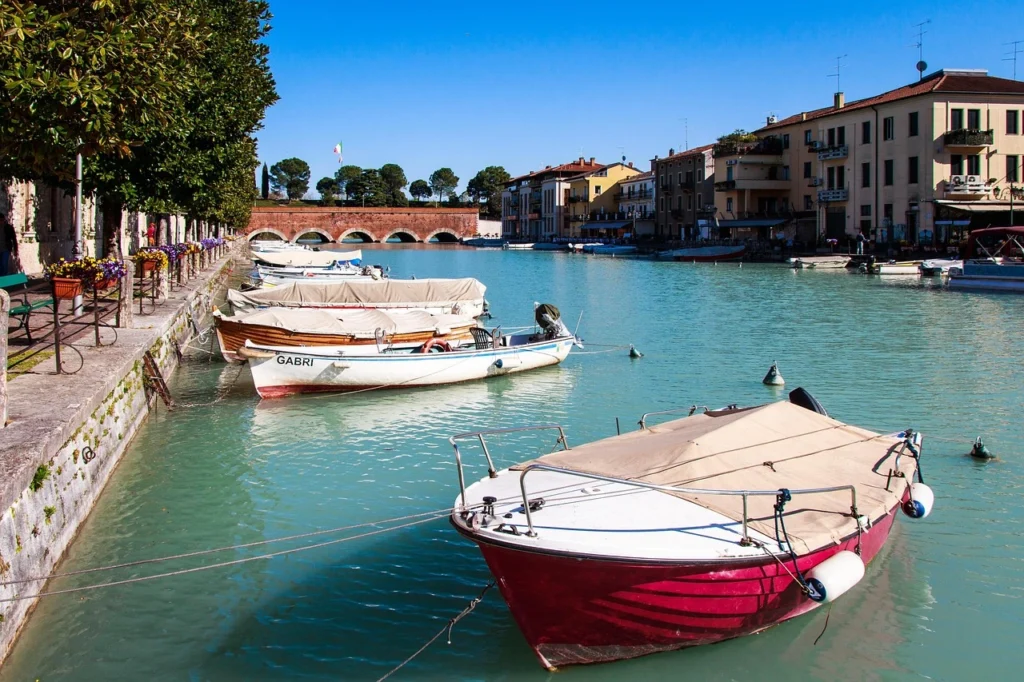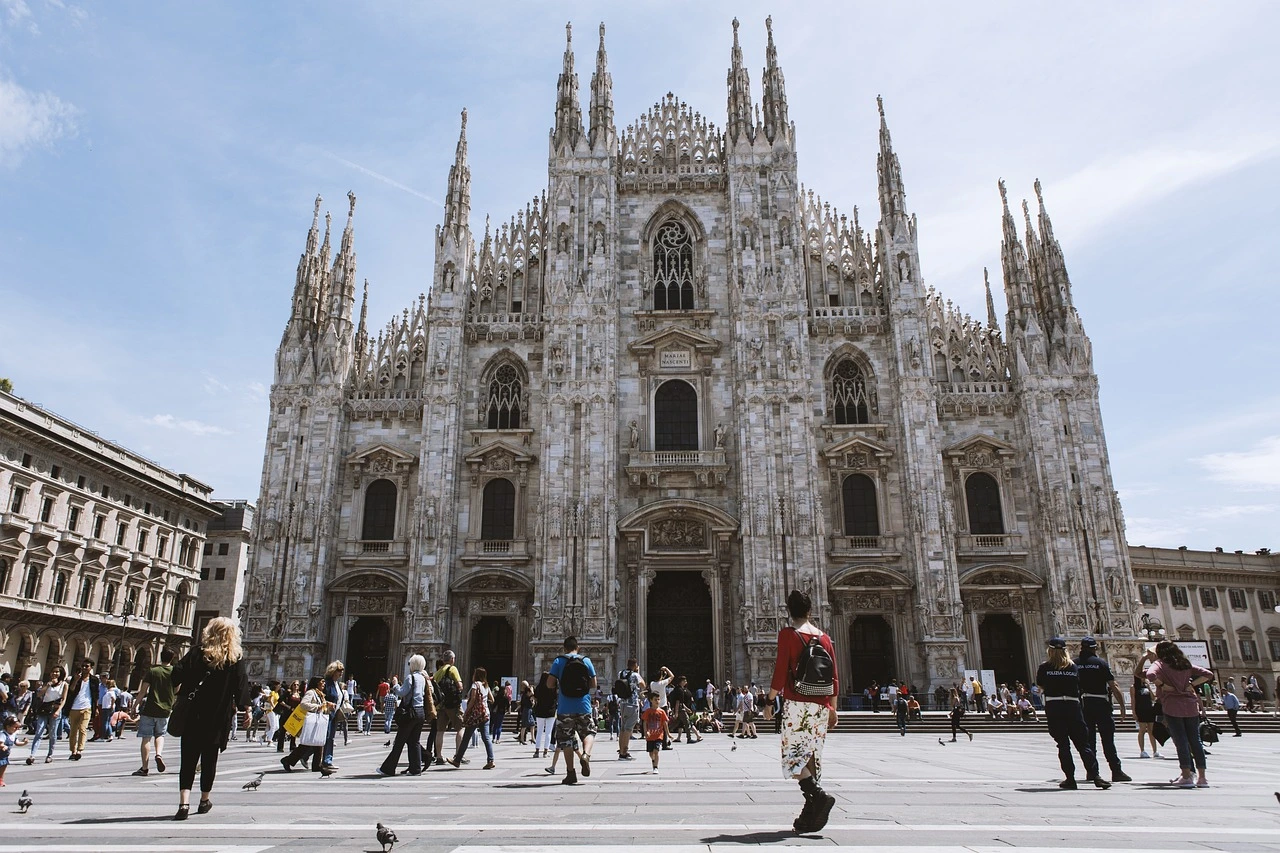Best Time to Visit Italy
Dreaming of sipping wine in Tuscany, exploring ancient ruins in Rome, or cruising along the Amalfi Coast? Italy beckons with its rich history, stunning landscapes, and world-renowned cuisine. But when is the best time to visit Italy to experience la dolce vita without battling massive crowds or extreme weather?
This comprehensive guide will help you determine the perfect time to visit Italy based on your interests, budget, and travel preferences. We’ll explore Italy weather by month, seasonal crowd patterns, price fluctuations, and can’t-miss festivals and events throughout the year.
The truth is, the best time to visit Italy depends entirely on what you’re seeking. Shoulder seasons (April-May and September-October) typically offer that sweet spot of pleasant weather and fewer crowds, while summer brings vibrant festivals alongside tourist throngs. Winter offers unique charms with holiday celebrations and drastically reduced crowds at major attractions.

Key Factors to Consider When Planning Your Italian Adventure
Weather: When Italy’s Climate Shines Brightest
Italy’s climate varies significantly from the Alpine north to the Mediterranean south. Understanding regional weather patterns is crucial for planning your perfect Italian getaway.
Northern Italy (Milan, Venice, Turin) experiences four distinct seasons with hot summers (75-90°F/24-32°C) and cold winters (25-45°F/-4-7°C). Expect more rainfall than in southern regions.
Central Italy (Rome, Florence, Tuscany) enjoys milder temperatures year-round, with warm summers (80-95°F/27-35°C) and cool but rarely freezing winters (40-55°F/4-13°C).
Southern Italy (Naples, Sicily, Sardinia) boasts a classic Mediterranean climate with hot, dry summers (85-95°F/29-35°C) and mild winters (50-60°F/10-15°C).
Several Italian regions have unique microclimates worth noting:
- The Alps can be snowy even in May or October
- The Po Valley often has foggy winters
- Lake Como enjoys mild temperatures thanks to its water-moderated climate
- Sicily can experience African heat waves in summer with temperatures exceeding 100°F/38°C
RegionSummer (Jun-Aug)Fall (Sep-Nov)Winter (Dec-Feb)Spring (Mar-May)North75-90°F, occasional rain45-70°F, moderate rain25-45°F, snow possible50-70°F, some rainCentral80-95°F, sunny55-75°F, light rain40-55°F, periodic rain55-75°F, mildSouth85-95°F, very dry65-80°F, minimal rain50-60°F, rainy periods60-75°F, pleasant
Crowds: Navigating Italy’s Tourist Seasons
Italy welcomes approximately 65 million international visitors annually, making it one of the world’s most-visited countries. Understanding tourist patterns can dramatically impact your experience.
Peak Season (June-August): Prepare for massive crowds at major attractions. The Colosseum welcomes up to 30,000 visitors daily in August, and Venice can host over 100,000 tourists per day during summer weekends.
Shoulder Seasons (April-May, September-October): Tourist numbers drop by roughly 30-40%, making these periods ideal for a more relaxed experience.
Off-Season (November-March): Visitor numbers plummet by 60-70% compared to peak season, except during Christmas and New Year’s.
Crowd-Beating Italy Travel Tips:
- Visit major attractions at opening time (typically 8:30 AM) or in the late afternoon
- Book skip-the-line tickets and guided tours in advance
- Explore popular destinations mid-week rather than weekends
- Consider lesser-known alternatives (Bologna instead of Florence, Verona instead of Venice)
- Stay in residential neighborhoods rather than tourist centers
Prices: Maximizing Value on Your Italian Vacation
Travel costs in Italy fluctuate dramatically throughout the year, impacting everything from accommodations to attractions.
High Season (June-August + Christmas/Easter weeks):
- Luxury hotel rooms: €350-800+ per night
- Mid-range accommodations: €150-300 per night
- Restaurant meals: €25-60 per person
- Flights from US: $900-1,500+ (economy)
Shoulder Season (April-May, September-October):
- Luxury accommodations: €250-600 per night
- Mid-range options: €100-200 per night
- Restaurant meals: €20-50 per person
- Flights from US: $700-1,100 (economy)
Low Season (November-March, excluding holidays):
- Luxury accommodations: €200-450 per night
- Mid-range options: €70-150 per night
- Restaurant meals: €18-40 per person
- Flights from US: $500-800 (economy)
Money-Saving Strategies:
- Book accommodations 4-6 months in advance
- Consider agriturismi (farm stays) or apartment rentals for authentic experiences at lower costs
- Take advantage of prix-fixe lunch menus (often 30-50% cheaper than dinner)
- Purchase city passes for major destinations (Roma Pass, Firenze Card)
- Travel on weekdays when flights are typically 15-25% cheaper

Events and Festivals: Experiencing Authentic Italian Culture
Italy hosts countless festivals and events year-round, many dating back centuries. These celebrations offer unparalleled insights into Italian culture and traditions.
Winter Highlights:
- Venice Carnival (February): Elaborate masks and costumes transform the floating city
- Christmas markets and nativity scenes nationwide (December)
- Milan Fashion Week (February): A must for fashion enthusiasts
Spring Celebrations:
- Easter Holy Week ceremonies (March/April): Spectacular processions in Rome and Sicily
- Infiorata (May/June): Streets carpeted with intricate flower designs in towns like Spello
- Giro d’Italia (May): Italy’s premier cycling race winds through picturesque landscapes
Summer Festivities:
- Palio di Siena (July & August): Historic horse race in Tuscany
- Venice Film Festival (August/September): Stars flock to the Lido
- Opera season at Verona’s Roman Arena (June-September)
Autumn Events:
- Grape harvests and wine festivals (September/October)
- White Truffle Fair in Alba (October/November)
- Rome Film Festival (October)
“To experience Italy at its most authentic, seek out the local sagre—food festivals celebrating regional specialties—that occur throughout the year in small towns across the country.” — Italian Tourism Board

Month-by-Month Guide to Visiting Italy
January in Italy: Weather, Crowds, Prices, and Events
Weather: Cold in the north (30-45°F/-1-7°C) with possible snow; mild in the south (45-60°F/7-15°C) with periodic rain. Rome averages 50°F/10°C with 7 rainy days.
Crowds: Very light except for ski resorts in the Alps and Dolomites. Major museums and attractions operate at 25-30% capacity.
Prices: Among the lowest of the year (except in ski destinations). Hotel rates in major cities drop 40-50% from peak season.
Key Events: Winter sales (beginning January 5), Epiphany celebrations (January 6), Sant’Antonio Abate festivities (January 17).
Pros: Minimal crowds at attractions, authentic local experiences, bargain prices. Cons: Shorter daylight hours, some coastal destinations partially shut down, cooler temperatures.
Who Should Visit: Art and culture enthusiasts, budget travelers, those seeking authentic experiences without tourists.
February in Italy: Weather, Crowds, Prices, and Events
Weather: Similar to January but gradually improving. Northern Italy averages 35-50°F/2-10°C; Southern Italy 50-60°F/10-15°C.
Crowds: Remains light except during Carnival celebrations in Venice, Viareggio, and other cities.
Prices: Generally low, but spike significantly in Venice during Carnival (up to 200% premium).
Key Events: Carnevale celebrations nationwide (dates vary), San Valentino (February 14), Milan Fashion Week (late February).
Pros: Unique cultural experiences during Carnival, continued low-season pricing in most regions. Cons: Variable weather, some attractions may have limited hours.
Who Should Visit: Photography enthusiasts, culture seekers, fashion lovers, romantic couples.
March in Italy: Weather, Crowds, Prices, and Events
Weather: Transitional month with improving conditions. Temperature ranges from 40-60°F/4-15°C in the north to 55-65°F/13-18°C in the south. Expect some rainfall throughout the country.
Crowds: Begin to increase, especially around Easter if it falls in March.
Prices: Start to rise from winter lows, with notable jumps during Easter week.
Key Events: Women’s Day (March 8), Rome Marathon (usually late March), Holy Week celebrations if Easter falls in March.
Pros: Blooming countryside, generally good value, increasingly pleasant weather. Cons: Unpredictable conditions, potential Easter crowds and price hikes.
Who Should Visit: Photographers, religious travelers (for Easter), outdoor enthusiasts.
April in Italy: Weather, Crowds, Prices, and Events
Weather: Spring in full effect with temperatures ranging from 55-70°F/13-21°C. Expect 5-8 rainy days across most regions.
Crowds: Moderate and building, with Easter week potentially very busy.
Prices: Mid-range, with premium pricing during Easter and toward the end of the month.
Key Events: Easter celebrations, Liberation Day (April 25), Rome’s Birthday (April 21), Artichoke Festival in Ladispoli.
Pros: Beautiful spring flowers, comfortable temperatures, pre-peak season atmosphere. Cons: Increasingly crowded at major sites, higher prices than winter.
Who Should Visit: Food enthusiasts, history buffs, those seeking balance between good weather and manageable crowds.
May in Italy: Weather, Crowds, Prices, and Events
Weather: Nearly ideal throughout the country. Northern Italy: 60-75°F/15-24°C; Central and Southern Italy: 65-80°F/18-27°C.
Crowds: Building steadily but not yet at summer peaks.
Prices: Approaching high-season rates, especially in popular destinations.
Key Events: International Tennis Championships in Rome, Infiorata flower festivals, Corsa dei Ceri in Gubbio.
Pros: Excellent weather, vibrant spring colors, water warm enough for swimming in the south. Cons: Increasingly crowded, higher accommodation costs.
Who Should Visit: Almost everyone, especially outdoor enthusiasts, photographers, couples.
June in Italy: Weather, Crowds, Prices, and Events
Weather: Summer begins with temperatures ranging from 70-85°F/21-29°C nationwide. Sunny days predominate with minimal rainfall.
Crowds: High season begins, especially after mid-month when schools let out.
Prices: Full high-season rates in most destinations.
Key Events: Republic Day (June 2), Luminara di San Ranieri in Pisa, summer opera seasons begin, Corpus Domini celebrations.
Pros: Long daylight hours, perfect beach weather, vibrant atmosphere. Cons: Crowds growing significantly, peak prices, heat can be intense, especially in cities.
Who Should Visit: Beach lovers, festival enthusiasts, nightlife seekers.
July in Italy: Weather, Crowds, Prices, and Events
Weather: Hot throughout the country. Northern Italy: 75-90°F/24-32°C; Central and Southern Italy: 80-95°F/27-35°C with minimal rainfall.
Crowds: Peak tourist season with maximum visitor numbers at major attractions.
Prices: Highest of the year, particularly in coastal areas and major cities.
Key Events: Palio di Siena (July 2), outdoor opera and concert festivals, Umbria Jazz Festival in Perugia.
Pros: Perfect beach weather, vibrant nightlife, maximum opening hours for attractions. Cons: Extreme heat in cities, massive crowds, highest prices, many locals on vacation.
Who Should Visit: Beach vacationers, night owls, festival-goers, families (despite crowds).
August in Italy: Weather, Crowds, Prices, and Events
Weather: Similar to July—very hot nationwide with temperatures sometimes exceeding 95°F/35°C in the south.
Crowds: International tourists at peak levels, though Italians often leave cities for vacation.
Prices: Peak rates continue, though some city restaurants and shops may close for holidays.
Key Events: Ferragosto (August 15), Palio di Siena (August 16), Venice Film Festival (starts late August), Week of Ferragosto celebrations nationwide.
Pros: Lively atmosphere in tourist and beach areas, perfect for water activities. Cons: Extreme heat, maximum crowds at major attractions, some local businesses closed.
Who Should Visit: Beach enthusiasts, festival attendees, those limited to summer vacation periods.
September in Italy: Weather, Crowds, Prices, and Events
Weather: Beginning to moderate with temperatures ranging from 65-85°F/18-29°C. Northern regions cool faster than southern areas.
Crowds: Gradually decreasing after the first week, though still substantial.
Prices: Remain high early in the month, then begin decreasing mid-month.
Key Events: Venice Film Festival (continues), grape harvest celebrations, Venice Historical Regatta, food festivals.
Pros: Still-warm weather, reduced crowds from August, harvest season begins. Cons: First half of month can still be quite busy and expensive.
Who Should Visit: Food and wine enthusiasts, cultural travelers, those seeking balanced conditions.
October in Italy: Weather, Crowds, Prices, and Events
Weather: Autumn arrives with temperatures ranging from 55-70°F/13-21°C. Expect increasing rainfall, particularly in northern regions.
Crowds: Moderate and continuing to decrease, though popular cities remain fairly busy.
Prices: Moderate, with good values becoming available.
Key Events: White Truffle Festival in Alba, Rome Film Festival, Eurochocolate in Perugia, harvest sagre (food festivals) nationwide.
Pros: Beautiful fall colors, excellent food season, comfortable temperatures, photography opportunities. Cons: Increasing chance of rain, shorter daylight hours.
Who Should Visit: Foodies, wine enthusiasts, photographers, mature travelers.
November in Italy: Weather, Crowds, Prices, and Events
Weather: Cooling significantly. Northern Italy: 40-55°F/4-13°C with frequent rain; Southern Italy: 55-65°F/13-18°C with periodic showers.
Crowds: Low except around specific holidays and events.
Prices: Among the lowest of the year (except Venice during acqua alta).
Key Events: All Saints Day (November 1), Opera season openings, White Truffle Fair (continues), Venice’s La Salute Festival (November 21).
Pros: Very few tourists, authentic experiences, significant savings on accommodations. Cons: Shorter days, frequent rain, some coastal destinations shutting down.
Who Should Visit: Budget travelers, museum enthusiasts, serious foodies, photographers.
December in Italy: Weather, Crowds, Prices, and Events
Weather: Winter conditions prevail. Northern Italy: 30-45°F/-1-7°C with possible snow; Central Italy: 40-55°F/4-13°C; Southern Italy: 50-60°F/10-15°C.
Crowds: Low early in month, then building significantly for Christmas and New Year’s holidays.
Prices: Low early in month, then peak again for holiday weeks.
Key Events: Christmas markets nationwide, Feast of the Immaculate Conception (December 8), Saint Lucy’s Day (December 13), Christmas and New Year’s celebrations.
Pros: Festive atmosphere, Christmas decorations, unique cultural experiences. Cons: Cold weather, reduced daylight, limited hours at some attractions.
Who Should Visit: Christmas enthusiasts, shoppers, religious travelers, winter sports fans.

Regional Recommendations: When to Visit Italy’s Top Destinations (Continued)
Rome: Best from April-May and September-October
The Eternal City is most enjoyable in spring and fall when temperatures are pleasant (65-80°F/18-27°C) and crowds are manageable. Avoid August when heat is oppressive and many locals leave. Winter offers drastically reduced crowds at major attractions like the Vatican Museums and Colosseum, with lines often 75% shorter than summer peaks.
Pro tip: Visit the Roman Forum in the late afternoon during spring or fall for the perfect golden hour lighting and photography opportunities.
Tuscany: Best from May-June and September
Tuscany’s rolling hills shine brightest during late spring and early fall. May brings wildflowers carpeting the countryside, while September offers the grape harvest and perfect temperatures (70-80°F/21-27°C). Summer can be scorching in Florence (frequently exceeding 90°F/32°C), though coastal areas like Viareggio remain pleasant.
Pro tip: For the quintessential Tuscan experience, visit during the olive harvest in November when prices drop by 30-40% and you can participate in olive oil tastings throughout the region.
Venice: Best from April and September-October
Venice struggles with overtourism during summer months when up to 100,000 daily visitors can overwhelm the floating city’s delicate infrastructure. April and autumn months offer dramatically reduced crowds. February’s Carnival brings unique cultural experiences but premium pricing. Winter months may experience “acqua alta” (high water) flooding, though this can create unique photography opportunities.
Pro tip: Book accommodations on Giudecca or in Cannaregio to escape the tourist hordes while remaining just minutes from major attractions.
Amalfi Coast: Best from May-June and September
The Amalfi Coast has an extremely limited high season due to its geography. The winding coastal roads become nearly impassable during July-August due to traffic. Visit in late spring or September when the water is warm (70-75°F/21-24°C), hiking trails are open, and restaurants are operating but not overwhelmed. November through March sees many businesses closed entirely.
Pro tip: Take the ferry rather than buses to travel between coastal towns during busy periods—it’s more scenic and avoids traffic congestion.
Sicily: Best from April-June and September-October
Sicily’s intense Mediterranean climate makes summer visits challenging, with temperatures frequently exceeding 95°F/35°C. Spring and fall offer perfect conditions for exploring ancient ruins, beautiful beaches, and mountain villages. Winter remains mild (55-60°F/13-15°C) along the coast but can be cold and snowy on Mount Etna.
Pro tip: Visit Taormina in May when the Mediterranean flora is in full bloom but before cruise ship crowds arrive in force.
Italian Lakes: Best from May-September
The Italian Lakes region (Como, Garda, Maggiore) has a shorter optimal season due to its northern location. Mid-May through June offers gorgeous flowering gardens and comfortable temperatures before peak crowds arrive. September provides warm lake waters (around 75°F/24°C) and harvest activities with reducing visitor numbers.
Pro tip: Lake Orta offers similar beauty to its more famous neighbors but with significantly fewer tourists and more authentic experiences.
Essential Italy Travel Tips for Any Season
Visa and Entry Requirements
EU citizens need only a valid ID card, while most non-EU visitors (including Americans, Canadians, and Australians) can stay up to 90 days without a visa. Always check current requirements before traveling, as regulations may change with limited notice.
Transportation Insights
Italy’s rail network is extensive and efficient, connecting major cities and many smaller towns. The high-speed “Freccia” trains significantly reduce travel times (Rome to Florence: 1.5 hours; Rome to Milan: 3 hours). Book tickets 2-3 months in advance for savings of up to 60% on standard fares.
For exploring rural areas like Tuscany or Umbria, consider renting a car—but avoid driving in major city centers where ZTL (limited traffic zones) carry hefty fines for unauthorized vehicles.
Money Matters
While credit cards are widely accepted in cities and tourist areas, smaller establishments and rural locations may require cash. ATMs (called “Bancomat”) are readily available throughout the country. Inform your bank of travel plans to prevent security blocks on international transactions.
Tipping is not obligatory in Italy as service is typically included (look for “servizio incluso” on bills), though rounding up or leaving 5-10% for exceptional service is appreciated.
Essential Italian Phrases
Learning a few basic Italian phrases enhances your experience significantly:
- “Buongiorno” (Good day)
- “Grazie” (Thank you)
- “Per favore” (Please)
- “Parla inglese?” (Do you speak English?)
- “Il conto, per favore” (The bill, please)
- “È squisito!” (It’s delicious!)
Safety Considerations
Italy is generally very safe for tourists, though petty theft can occur in crowded tourist areas. Use common sense precautions like wearing money belts in busy areas and avoiding displaying expensive jewelry or electronics.
Be aware of tourist scams, particularly in Rome and Florence, such as “friendship bracelets” or flowers that seem free until payment is demanded.
Seasonal Packing Guidelines
Spring/Fall:
- Layerable clothing (temperatures can vary significantly)
- Light raincoat or umbrella
- Comfortable walking shoes
- Light scarf (useful for church visits requiring shoulder coverage)
Summer:
- Lightweight, breathable clothing
- Sun hat and sunglasses
- Sunscreen (SPF 30+)
- Modest attire for church visits
- Water bottle (tap water is excellent and fountains are abundant)
Winter:
- Warm coat and layers
- Waterproof shoes
- Gloves and scarf
- Umbrella
“Pack for the trip you’re taking, not the trip you wish you were taking. Italy’s diverse climate means your Amalfi Coast wardrobe won’t work in Milan in November.” — Italian Tourism Expert
Conclusion: Finding Your Perfect Italian Season
The best time to visit Italy truly depends on your personal priorities. Are you seeking ideal weather, minimal crowds, budget-friendly options, or specific cultural experiences? Italy rewards visitors in every season, each offering its own unique charm and character.
For most travelers, the shoulder seasons of late April to early June and September to mid-October offer the ideal balance of pleasant weather, manageable crowds, and reasonable prices. These periods allow you to experience Italy’s remarkable cultural heritage and natural beauty without the extremes of summer heat and crowds or winter closures.
Winter travelers will discover a more authentic Italy with locals going about their daily lives, while summer visitors can enjoy the country’s vibrant energy and coastal splendors—if prepared for the accompanying crowds and heat.
Whatever season you choose, Italy’s timeless appeal, remarkable cuisine, and unparalleled cultural treasures await. The country rewards those who plan thoughtfully but remain flexible enough to embrace the unexpected delights that make travel to Italy so eternally rewarding.
Ready to plan your Italian adventure? Subscribe to our newsletter for exclusive Italy travel tips, hidden gem recommendations, and seasonal travel deals. Or share your own Italy travel experiences in the comments below—when was your favorite time to visit Italy?
Buon viaggio!

